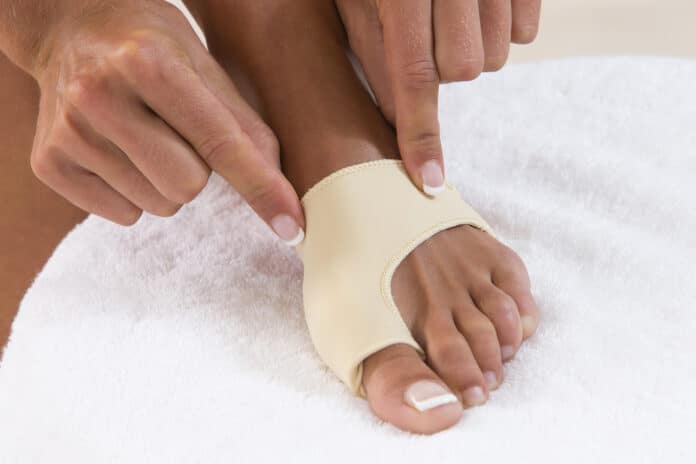
A bunion, also known as a hallux valgus, is a boney protrusion that extends off the side of the foot. Bunions usually protrude off the side of the big toe, though they may appear on the opposite side, protruding from the small toe, in rare circumstances.
Bunions are often painful and may cause other issues with the feet and mobility. Luckily, there are several treatment options to mitigate pain and get rid of bunions.
Symptoms of a Bunion
If you have developed a bunion on your foot, you’ll likely know something is wrong. Bunions cause both visual and internal symptoms in the sufferer.
People with bunions often experience the following symptoms:
- A protrusion on the outer edge of the foot, usually coming from the big toe, which was not there before.
- Pain or sensitivity in and around the bunion.
- A burning sensation over the bunion.
- Hammertoes or calluses on the bottom of the foot.
- Corns, or other skin abnormalities on the foot.
Diagnosis is often simple for bunions. A doctor can look at your foot and typically diagnose this condition with the naked eye. A doctor may ask you about any pain, sensitivity, or burning in the area. They may also look for other coexisting conditions like calluses or corns.
Bunion Treatments
Typically, treatment is only recommended for bunions if it is causing pain to the person. Usually, a combination of medication and lifestyle changes can help resolve a bunion.
A doctor will recommend you take an OTC anti-inflammatory pain reliever, like Ibuprofen. A doctor will also suggest assessing your current footwear to ensure your shoes are appropriate for your foot. Ill-fitting shoes can cause issues like bunions.
Certain devices, such as bunion pads or toe spacers, may be worn to decrease pressure on the bunion, allowing it to heal. If these are bothersome to your day-to-day life, a doctor may suggest night splints that can correct your toe alignment while you sleep.
Only in serious cases, a doctor may suggest surgery. This is often the last resort and it’s rare that someone with a bunion will need surgery to relieve their symptoms.
There are also many simple, at-home steps you can take to mitigate discomfort and promote healing for a bunion. Some of these actions include:
- Whenever possible, remove your shoes. Then, elevate your feet to prevent swelling and inflammation.
- Apply an ice pack for 10 to 15-minute intervals to quell extreme pain or swelling.
- Soak your feet in a cool tub to reduce pain and swelling.
Conclusion
Bunions may be painful, but they are not life-threatening and can be healed with simple at-home treatment. In very rare cases, surgery is necessary to solve a bunion. However, in most cases, a combination of oral medication, devices to realign the foot, and at-home remedies can be used to cure a bunion and get someone up on their feet again!


















